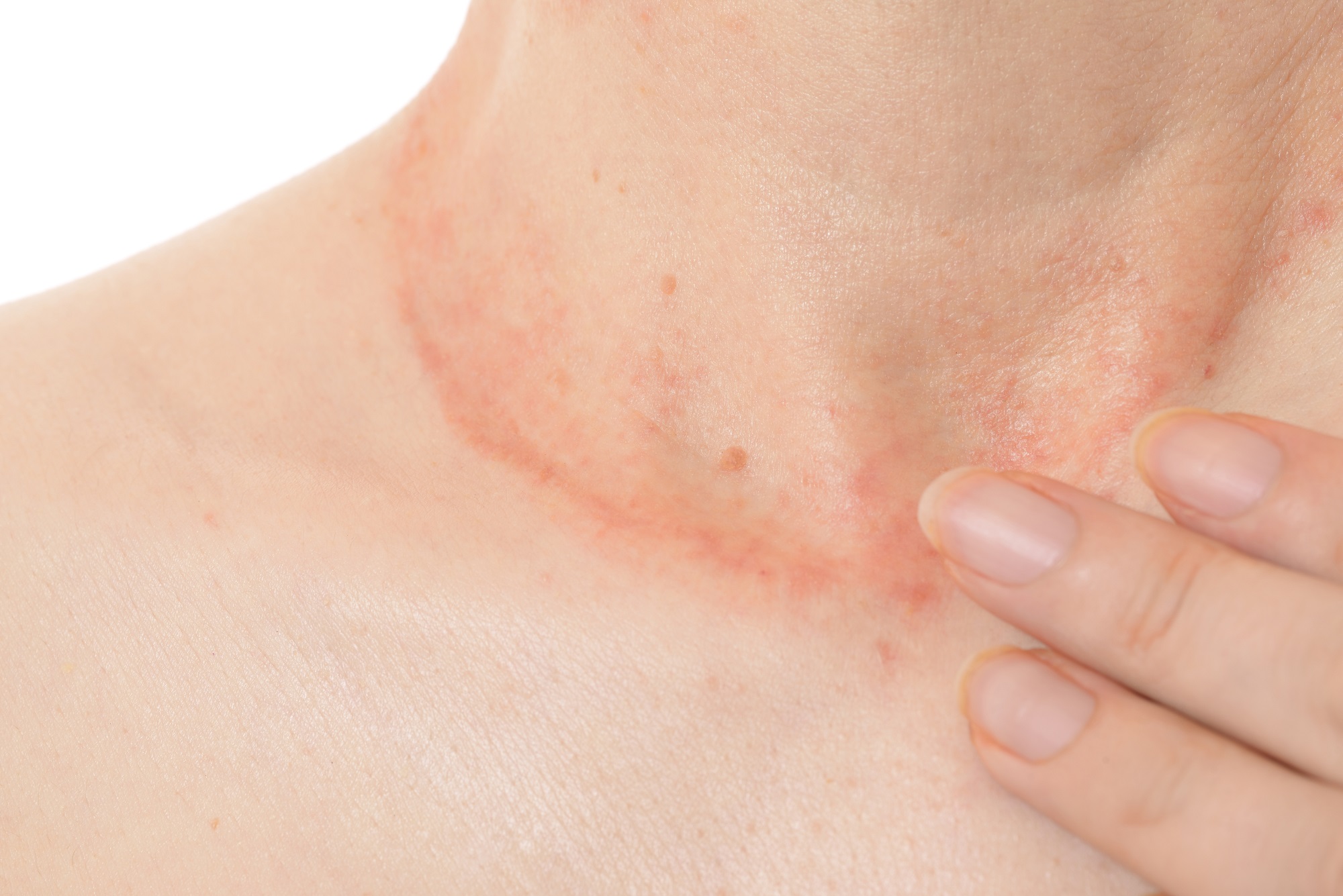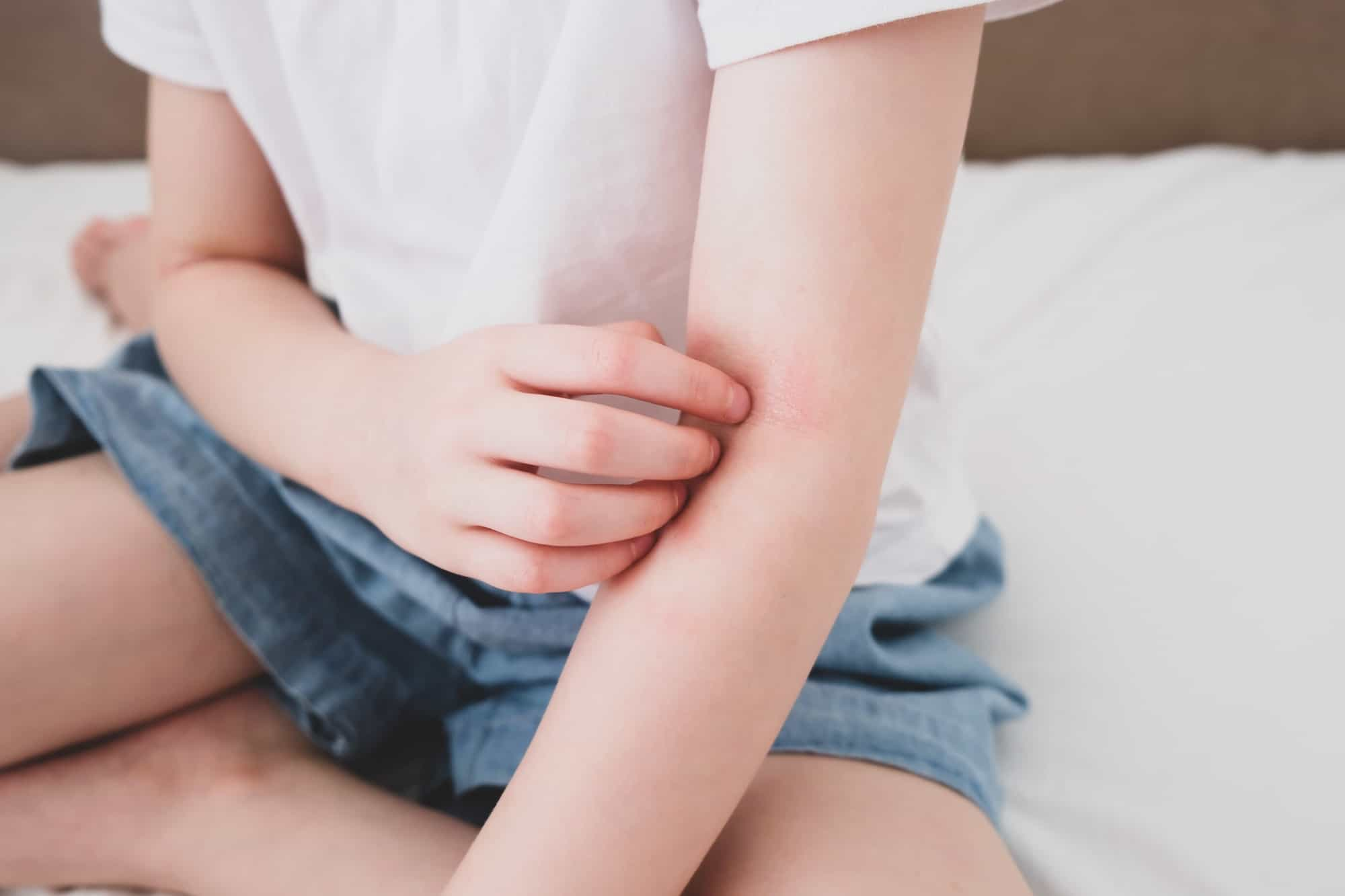The aetiopathogenesis of atopic dermatitis
The exact aetiopathogenesis of atopic dermatitis is not known, but certainly involves genetic and environmental factors.
Atopic dermatitis is often associated with elevated serum levels of total IgE, the immunoglobulins that are formed following an allergic and immunological reaction, and the presence of specific IgE directed towards aeroallergens or food allergens; however, there is no close correlation between IgE levels and disease severity.
Environmental factors, including allergens, stress, skin infections, sweating, in the presence of the genetic substrate, are capable of exacerbating a hypereactive skin inflammatory process.
In acute phases, the ectema that is created in atopic dermatitis is characterised by swelling, vesiculation and crust formation; in chronic phases it is characterised by fissuring and lichenification.
One could also have contact dermatitis, similar to atopic dermatitis but stimulated by contact with an irritant substance.
Symptoms of atopic dermatitis

A common feature of atopic dermatitis in children and adults is itching, which occurs in fits, triggered by various factors such as changes in temperature and humidity, mechanical stimulation or contact with allergens.
Atopic dermatitis in children often begins between the third and sixth month of life and manifests itself with erythematous patches, modestly oedematous, which may become covered with tiny vesicles, sometimes with serous exudate, giving rise to yellowish serum-hematous crusts called milky crusts.
The site of the lesions varies according to age:
- up to 2 years of age the most affected sites are the face, neck and scalp;
- around 4-10 years of age the lesions are localised mainly at the cubital or popliteal folds, hands and face;
- in adolescents, lesions are mainly localised at the level of the face, neck, limb folds and hands.
In adults, lesions also affect the genital and periareolar areas, which are not affected by atopic dermatitis in children.
Sometimes the lesions may be nummular, i.e. coin-shaped. Typical of atopic dermatitis is the manifestation at the level of the
hands (continuous need to wash hands because the skin is always dry) and onychodystrophy.
Typical of the palms of the hands and the lateral surface of the fingers is dyshidrosic eczema, characterised by horny microvesicles.
Minor clinical signs, i.e. those occurring less frequently in different patients, could be:
- Skin dryness with a tendency to desquamation
- Keratosis pilare (aggregation of keratinocytes at the hair follicle outlet, resembling goose bumps)
- Cheilitis angularis (the tendency to continuously lick the lip and the deposit of saliva lead to the onset of perioral lesions)
- Rashes of the subauricular fold
- Pityriasis alba (maculae or hypopigmented spots with shaded margins distributed in a non-specific manner most often on the face or limbs that become evident after tanning because there are areas where there is no homogeneous deposition of melanin and are typical features of atopics.
You may also like
What is atopic dermatitis and which treatments are most suitable
Atopic dermatitis, also known as endogenous eczema, is a benign disease with a multifactorial aetiology, which, together with asthma and allergic rhinitis, is one of the atopic diseases, i.e. diseases related to the tendency of certain (atopic) individuals to manifest amplified immune responses to small amounts of allergens. We distinguish two forms of atopic dermatitis… Continue reading What is atopic dermatitis and which treatments are most suitable
Understanding Treatment Options for Lung Cancer
The treatment of lung cancer has advanced significantly over the past decades, offering new hope and improved outcomes for many patients. While the approach depends on the type and stage of cancer, as well as a person’s overall health, the primary goals are to remove or control the tumor, alleviate symptoms, and prolong life with… Continue reading Understanding Treatment Options for Lung Cancer
Recognizing the Symptoms of Lung Cancer
Lung cancer is one of the most common and serious forms of cancer, affecting people worldwide regardless of gender, age, or background. It develops when abnormal cells in the lungs grow uncontrollably, forming tumors that interfere with normal breathing and oxygen exchange. Detecting the symptoms early is crucial, as early diagnosis often leads to more… Continue reading Recognizing the Symptoms of Lung Cancer
Exploring the Treatment Options for Psoriasis
Psoriasis treatment aims to reduce inflammation, slow down excessive skin cell growth, and manage flare-ups. Although there is currently no cure, advances in medical research have made it possible for most people with psoriasis to lead comfortable, fulfilling lives. The choice of therapy depends on the severity of symptoms, the type of psoriasis, and individual… Continue reading Exploring the Treatment Options for Psoriasis
Understanding the Symptoms of Psoriasis
Psoriasis is a chronic inflammatory skin condition that affects millions of people worldwide. It occurs when the body’s immune system accelerates the skin cell production cycle, causing cells to build up rapidly on the surface. These excess cells form scaly, inflamed patches that can be both physically uncomfortable and emotionally distressing. Recognizing the symptoms early… Continue reading Understanding the Symptoms of Psoriasis
